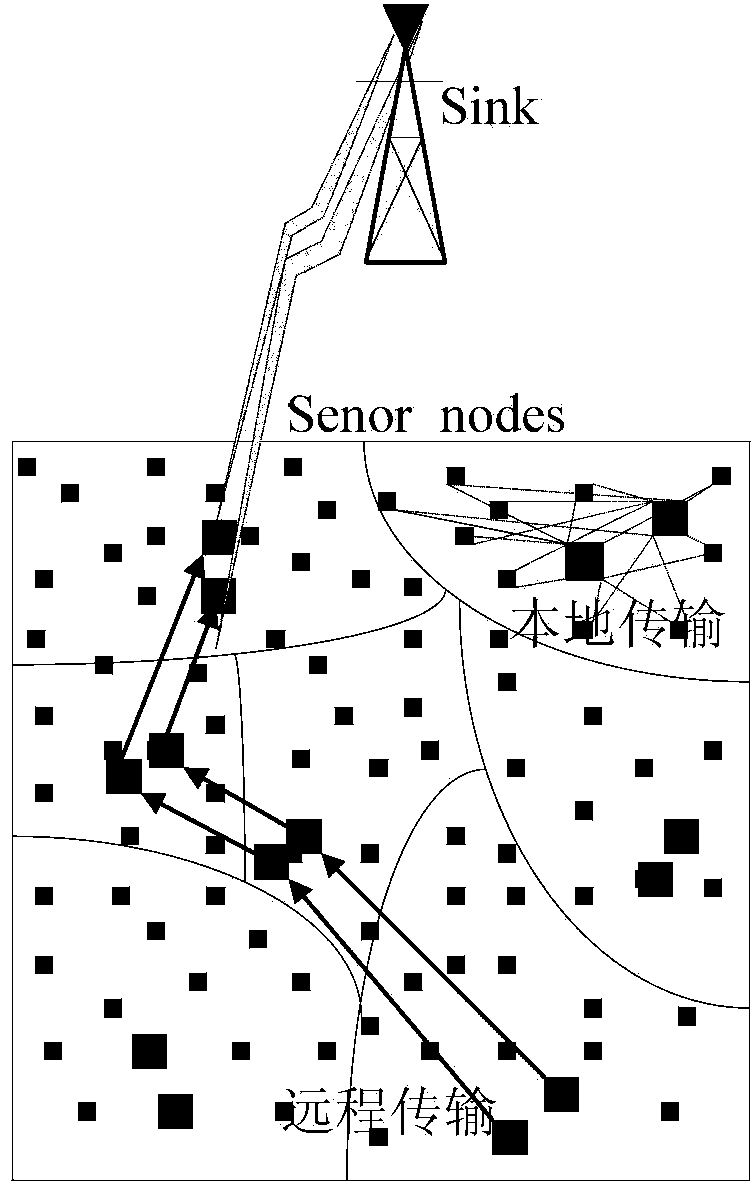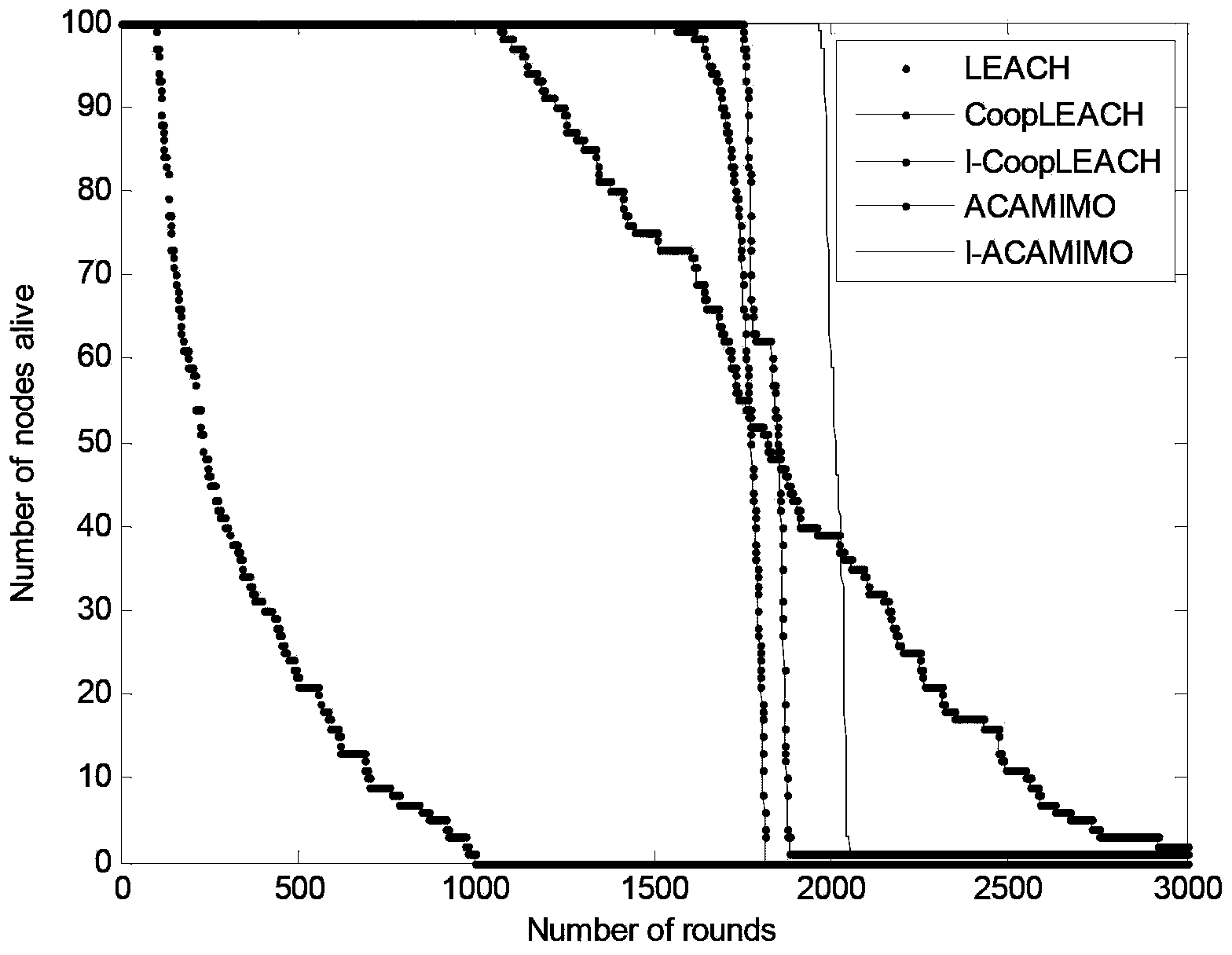Ant colony algorithm-based high-energy efficiency wireless sensor network routing method
A wireless sensor and ant colony algorithm technology, applied in network topology, wireless communication, advanced technology, etc., can solve the problems of long-distance energy consumption between clusters, individual nodes die too fast, and energy consumption is not balanced.
- Summary
- Abstract
- Description
- Claims
- Application Information
AI Technical Summary
Problems solved by technology
Method used
Image
Examples
Embodiment Construction
[0054] A method for routing a wireless sensor network with high energy efficiency based on an ant colony algorithm, comprising the following steps:
[0055] (A) Clustering stage: cluster the sensor nodes in the monitoring area, randomly select the cluster head node in each round according to the threshold function, and increase the probability of the node with more remaining energy becoming the cluster head node. If the distribution of cluster head nodes is too dense, some cluster head nodes will be canceled to adjust the distribution scale of the cluster adaptively. Common nodes except the cluster head nodes will join the cluster according to the received broadcast signal strength of the cluster head nodes. The remaining energy and energy consumption of hopping MIMO transmission select cooperative nodes; the process of clustering adaptively adjusts the distribution and size of clusters through steps (A1) and (A2), and selects cooperative nodes through step (A3).
[0056] (A1)...
PUM
 Login to View More
Login to View More Abstract
Description
Claims
Application Information
 Login to View More
Login to View More - R&D
- Intellectual Property
- Life Sciences
- Materials
- Tech Scout
- Unparalleled Data Quality
- Higher Quality Content
- 60% Fewer Hallucinations
Browse by: Latest US Patents, China's latest patents, Technical Efficacy Thesaurus, Application Domain, Technology Topic, Popular Technical Reports.
© 2025 PatSnap. All rights reserved.Legal|Privacy policy|Modern Slavery Act Transparency Statement|Sitemap|About US| Contact US: help@patsnap.com



